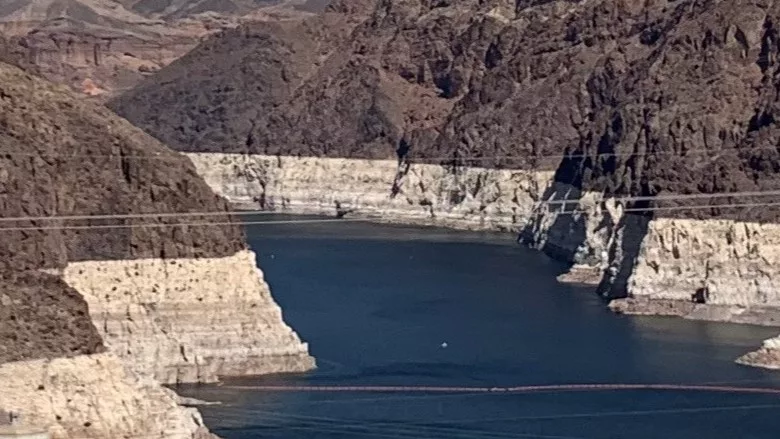A New Colorado River Compact for a New Century
Groundwater Industry Can Share its Facet of Water Expertise

The famous “bathtub rings” at Lake Mead as seen over the Hoover Dam. The Colorado River has suffered from oversubscription for years.
Source: Jeremy Verdusco
Put yourself for a moment in 1922. You could drive a new Model T off the lot for under $400. The Congressional investigation ramped up into the President Warren G. Harding administration’s Teapot Dome scandal. Your great-great grandfather might have worked a farm or in a machine shop in one of the United States’ rapidly industrializing cities.
That year, seven of the 48 states signed the Colorado River Compact, which apportions water rights between the river’s Upper and Lower Basins. What has changed in more than a century since the compact’s signing?
- California’s population added a zero on the end, going from about 3.9 million to about 39 million.
- Las Vegas went from a railroad-crossing town of 2,300 to a thriving entertainment mecca of nearly 700,000.
- Average daily water consumption in the United States went from about 38 gallons per person per day to about 88 gallons.
The Biden Administration recently made clear to stakeholders cuts are coming. Recent heavy rains and snow pack help, but make no mistake: the drought isn’t over. Even if it were, Western states deserve a clear, equitable agreement to share and sustain the river for future generations. It needs flexibility to address:
- Tribal water rights
- The needs of farmers
- The needs of growing Western states and cities
- Water quality
- Water conservation
And, it needs to weigh all of these issues while planning for long-term ebbs and flows in the water the river can supply without turning the Grand Canyon into a stagnant ditch. This work offers a generational challenge and opportunity if we rise to it. None of this is easy. If it were, it’d be done already. But it’s work that needs doing, and work that groundwater professionals can help inform.
Just penciling it out, California residents alone used about 148 million gallons of water per day in 1922. Today, California residents use about 3.4 billion gallons of water per day. Of course, Arizona, Colorado, Nevada, New Mexico, Utah and Wyoming all grew in those 100 years too. People in those states also kept up Americans’ increasing pace of water use for basic hydration and sanitation. Not all of that water comes from the Colorado River, but it does come from somewhere and most sources have faced severe stress as the Western drought drags on.
We all built this and now we need to build something else. Put simply, the folks who designed the Colorado River Compact more than a century ago couldn’t have imagined that the river in 2023 would need to serve 40 million people. They couldn’t have imagined California would grow into an agricultural powerhouse, producing about 40% of the fruits and veggies Americans see on supermarket shelves. They couldn’t have foreseen the worst drought in 1,200 years in the U.S. West, starting just 80 years later.
The river system, like an aquifer, has inputs and outputs. Those inputs have shrunk dramatically over the last 20 years amid severe drought conditions. The outputs, meanwhile, have soared for everything from thirsty alfalfa crops to 1,000-room (and shower and toilet …) hotels to 1,000-home (and shower and toilet …) subdivisions. It all adds up — and it was all built over the last 100 years as if the U.S. West wasn’t already a relatively dry part of the world.
We can’t do much on the inputs side. That’s up to Mother Nature. However, we have a ton of control over the outputs side: how much we use and where we use it. I don’t argue this is easy. It won’t be. People will have to sacrifice. That sacrifice has to be shared and cooperative.
We ask the Colorado River Compact, in 2023, to do work it wasn’t designed in 1922 to do. It’s time to stop asking and get to the hard work of revising water policy for this century and beyond.
What do you think? Have you followed news about modernizing the Colorado River Compact? How would you redesign it? Send an email to verduscoj@bnpmedia.com.
Stay safe out there, drillers.
Step Up to the Mic
Interesting project? Industry wisdom to share? Email verduscoj@bnpmedia.com to be considered for a guest spot the Driller Newscast.
Looking for a reprint of this article?
From high-res PDFs to custom plaques, order your copy today!



